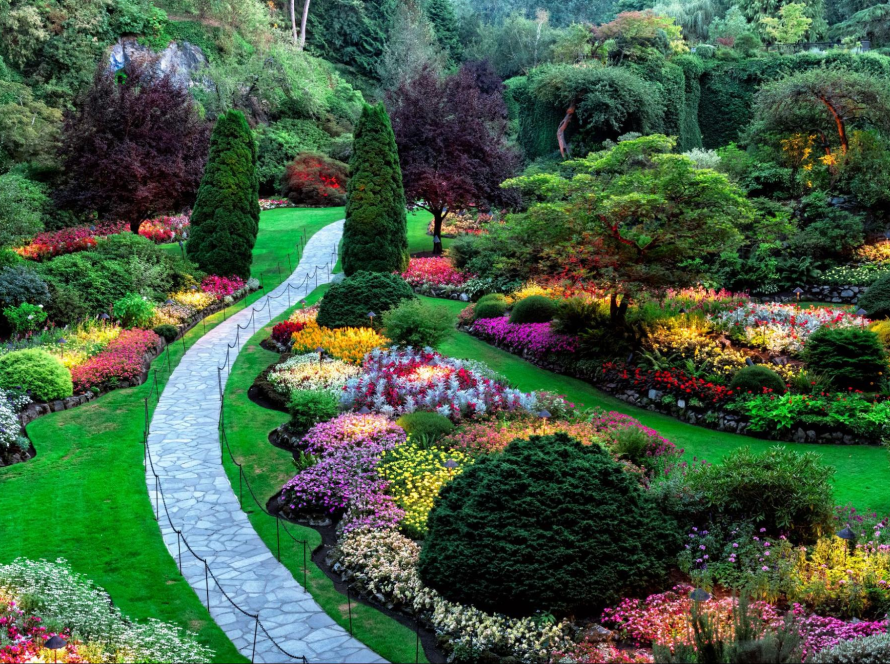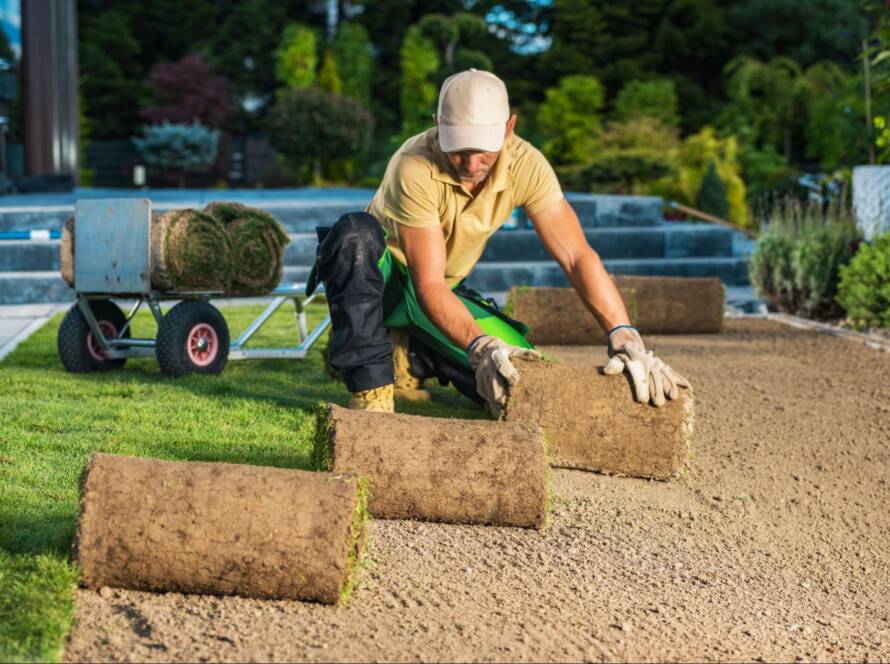Straw mulch is an eco-friendly ground cover made from the stalks of cereal crops, such as wheat, oats, or barley. It’s widely used in gardens, farms, and landscapes for its natural ability to protect soil and conserve water. As climate concerns grow, more homeowners and land managers are turning to straw mulch for its practical and sustainable benefits. It reduces inputs, lowers maintenance, and supports healthier ecosystems with minimal effort.
How Straw Mulch Reduces Water Use in Soil
Straw mulch helps soil retain moisture by slowing evaporation and regulating temperature. When laid across garden beds or crop rows, the straw forms a breathable barrier that shields soil from direct sunlight. This layer retains water where needed, typically around plant roots, resulting in a significant drop in watering needs. In dry climates or during heat waves, this makes a noticeable difference in how often irrigation is required.
Water Retention Lowers Outdoor Water Demand
According to recent agricultural studies, mulch can cut water loss by up to 70%. That kind of savings protects both plants and local water supplies. Gardens that use straw mulch often need fewer watering sessions each week. It saves money on utilities while reducing strain on wells and municipal systems. With water becoming a limited resource, these minor adjustments add up. Straw mulch turns moisture control into a passive, ongoing advantage.
Why Straw Mulch Benefits the Environment Naturally
Healthy landscapes don’t start with fertilizers or fancy tools. They start with smart choices that respect the soil and climate. From residential gardens to full-scale landscaping services, using straw mulch supports greener, low-maintenance environments. Its environmental value shows up in ways that matter every day.
Straw Mulch Improves Soil Structure and Health
Over time, straw mulch breaks down into organic matter that enriches the soil. This natural decomposition supports beneficial microbes and earthworms, enhancing soil fertility without the need for synthetic fertilizers. The result is a crumbly, well-aerated soil that supports better root development and nutrient absorption. In areas with depleted or compacted ground, straw mulch can jumpstart recovery.
Organic Breakdown Feeds Living Soil Systems
Fungi, bacteria, and other soil organisms utilize the nutrients released from decaying straw. These microorganisms form networks that facilitate the efficient transfer of nutrients to plant roots. Earthworms thrive in this habitat, improving soil structure through their tunneling. This activity keeps the soil loose, drains water evenly, and prevents crusting. Better structure means roots grow deeper, and plants stay healthier. Soil enriched with organic matter also holds carbon more effectively.
Repurposes Agricultural Waste Efficiently
Straw is a byproduct of cereal grain farming, often discarded or burned unless it is reused. Using it as mulch diverts tons of plant material from waste streams, giving it a productive second life. This closed-loop use of organic residue prevents valuable biomass from being sent to landfills and reduces emissions from field burning. Unlike wood chips or rubber mulches that require processing, straw is field-ready with minimal energy input.
Straw Mulch Reduces Pollution from Farm Waste
Burning straw creates smoke and releases greenhouse gases into the atmosphere. When farmers or gardeners use straw mulch instead, they avoid adding to that pollution. This eco-conscious reuse also reduces the need for synthetic mulches that may leach chemicals into the soil. Straw’s short supply chain and low processing requirements make it an efficient choice. That helps reduce the overall environmental burden of your landscaping materials. It’s a win-win for both gardeners and growers.
Supports Sustainable Gardening Practices
Straw mulch supports low-impact gardening that protects both soil and plants. It reduces the need for chemicals and keeps maintenance minimal. This natural material fits easily into organic methods and smart landscaping design. It’s a practical way to garden sustainably without overcomplicating the process.

Naturally Blocks Weed Growth
One of the most evident advantages of straw mulch is its effectiveness in stopping weeds. Covering the ground prevents light from reaching weed seeds, which discourages germination. Gardeners report fewer invasive plants and less time spent weeding. That also means less need for herbicides, keeping your soil clean and pollinators safe. In food gardens, chemical-free weed control adds another layer of health protection. Straw mulch keeps things simple and sustainable.
Shields Soil from Erosion and Runoff
Rain and wind can strip away topsoil, especially on bare or sloped land. Straw mulch acts as a protective blanket, reducing splash erosion and runoff. It helps water soak in slowly rather than washing across the surface. It also means nutrients stay put, feeding plants instead of draining away. This kind of stability is essential on construction sites, garden paths, or sloping yards. It maintains the land’s integrity without heavy equipment or complex systems.
Lowers Landscape Carbon Emissions
Straw mulch reduces your landscape’s carbon footprint in multiple ways. It reduces water use, which in turn lowers the energy required for irrigation systems. It also reduces the need for chemical fertilizers and weed killers, which have high carbon production costs. Because straw is often locally sourced, it doesn’t rack up emissions during transport. Using natural mulch instead of plastic or rubber alternatives avoids long-term pollution. In short, it’s a cleaner, smarter material for sustainable landscapes.
Supports Organic and Permaculture Methods
Organic growers and permaculturists rely on systems that support soil and natural cycles. Straw mulch fits seamlessly into these models. It feeds soil life without disrupting it and doesn’t introduce synthetic compounds. It works well with no-till gardening and food forests where soil cover is critical. Even in small backyards, these principles apply. Straw mulch lets you build fertility with minimal disturbance.
Straw Mulch Benefits Extend Beyond the Garden
The impact of straw mulch doesn’t stop at the surface of your soil. Its environmental reach goes further, supporting cleaner air, better biodiversity, and healthier communities. Whether you’re managing a backyard or a public park, its advantages scale well across different environments. Its benefits ripple into the environment in practical, measurable ways.
Creates Habitat for Beneficial Organisms
Straw mulch creates a cool, moist microclimate that encourages soil life. Insects, beetles, fungi, and worms thrive beneath the mulch layer, working to break down organic matter and cycle nutrients. These organisms also help control pests naturally and improve soil tilth. Healthy biodiversity below ground leads to more vigorous plants above it. This balance reduces your need for external inputs while enhancing natural resilience. A diverse soil ecosystem is key to long-term garden health.

Reduces Noise and Dust in Public Spaces
Urban environments face challenges like dust pollution and ambient noise. Straw mulch helps quiet the landscape by softening sounds and anchoring loose soil. It is instrumental in parks, schoolyards, or near busy roads. Unlike gravel or synthetic mulch, straw breaks down naturally and doesn’t create surface runoff issues. It improves the comfort and air quality of high-traffic areas. As a bonus, it’s safe for children, pets, and local wildlife.
Helps Retain Nutrients During Heavy Rain
In rainy regions, nutrients often leach from the soil before plants use them. Straw mulch reduces this leaching by slowing water movement and protecting surface soil. It also improves infiltration, which keeps nutrients where they belong, that is near plant roots. That matters for food crops and ornamentals alike. Consistent nutrient levels support steady growth and reduce the need for external fertilization. That’s better for your wallet and local waterways.
Supports Climate-Resilient Land Use
As climate patterns shift, resilience matters more than ever. Straw mulch buffers against weather extremes like heat, frost, and flooding. It helps stabilize temperature swings in the root zone and absorbs rainfall to prevent pooling. In wildfire-prone areas, it also helps suppress fast-spreading grasses when managed correctly. These small factors combine to make a significant environmental difference. Choosing mulch that adapts to these pressures is a smart step toward long-term land care.
Why Straw Mulch is Practical and Ethically Aligned
Straw mulch makes sense not only for what it does but also for what it represents. It’s natural, renewable, and affordable, offering high impact without high cost. It supports the values many homeowners and landscapers now prioritize: safety, low waste, and long-term benefit. It’s a practical solution that doesn’t sacrifice quality or performance.
Widely Available and Budget-Friendly
Straw mulch is easy to source from local farms, garden centers, or feed stores. It doesn’t require refining, coloring, or chemical treatment. Because it’s a byproduct, it often costs less than bark or decorative mulch. That makes it accessible for large projects and small spaces alike. You can apply it in bulk without overspending or compromising quality. And when it’s time to replenish, it’s just as easy to get.
Leaves No Waste Behind
Unlike plastic or rubber mulch, straw breaks down into the soil naturally. There’s no need to collect or dispose of it. As it decomposes, it improves the land rather than polluting it. That simplicity supports a low-waste, circular approach to gardening and landscaping. It’s a cleaner choice for people who want their yards to reflect their values—nothing synthetic, nothing toxic—just straw doing its job.
Creates Safer, Healthier Outdoor Areas
Straw mulch reduces the use of chemical treatments in gardens and landscapes. That means less risk of exposure for kids, pets, and pollinators. It also limits dust and surface glare, making outdoor spaces more comfortable. These minor quality-of-life improvements add up. For families and communities seeking to adopt a greener approach, straw mulch promotes safe and livable landscapes. It’s a simple material that contributes to everyday wellness.
Requires Minimal Maintenance Over Time
Straw mulch doesn’t demand constant care. It settles in quickly, stays in place with light raking, and decomposes gradually. You can replenish it seasonally without removing the old layer. This ease makes it appealing for schools, parks, and public gardens with limited staff. Even for home gardeners, less work means more time to enjoy the results. It’s low-effort land care with high returns.
Use Straw Mulch for Cleaner, Smarter Land Care
Every garden, yard, or green space tells a story; what you choose to put into the ground reflects what you value. Straw mulch speaks volumes without effort: it reduces waste, conserves water, minimizes noise, and uses fewer chemicals. It’s a quiet upgrade with long-term impact. This natural solution is already within reach if you’re ready to protect your soil and simplify maintenance. Let your next layer of mulch work for the land, not against it. Choose straw, and grow with intention.
For practical advice and inspiration on building greener spaces, head to the Brady Landscaping & Construction blog today.


